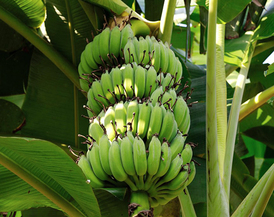 "And Justice For All" Poster Updated
The Civil Rights poster “And Justice For All” is
the primary method utilized to inform customers of their rights and displays
information relevant to assisted programs. The poster was recently updated. The NIFA website instructs
land-grant partners on guidelines of use.
|
 After at Least Five Decades of Growth, High-Income Countries are
Now Investing Less in Public Agricultural R&D
By Paul Heisey, ERS
Governments in high-income
countries are spending less on agricultural research. A new report from USDA’s
Economic Research Service reviews long-term trends in public agricultural
research and development (R&D) investment by high-income countries and
examines how these investments have contributed to economic growth. In
high-income countries (the United States, European countries, Israel, Japan,
South Korea, Canada, Australia, and New Zealand) as a group, spending on public
agricultural research (adjusted for inflation) grew rapidly after 1960.
However, this growth slowed significantly in recent decades and is now
declining. Read the full
USDA article.
Elizabeth
Denvir, USDA's Agricultural Research Service biological laboratory
technician, extracts samples for total lipid fatty acid composition. USDA
photo.
|
 Creating Dialogue
- Tropical Island Farmer Education Series
The University of Guam conducted the New Tropical Island
Farmer Risk Management Education Series focusing on risk management for
agricultural producers, and production/business support professionals.The intended audience included resource-challenged, beginning and small farmers, and focused on those who were veterans or Chamorra Land Trust Commission lease holders or applicants. The program
created a dialog between the university and potential farmers in the Veteran
community. Over 40 Veterans attended and will practice the skills learned. Read
the full Western Extension Risk Management Education article..
|
NIFA Invests $3.7 Million
in Economics, Markets, and Trade Research
NIFA announced 10
Economics, Markets, and Trade awards that will promote American
agricultural products and exports. Research efforts include the effects of
regulatory measures on U.S. and global agricultural trade, quantitatively
evaluating food safety monitoring and enforcement tools, the economic viability
and growth of organic farming, and a regional dynamic model of U.S. beef cattle
to assess the economic impacts of movement restrictions in an event of foot-and-mouth
disease. This research will also help U.S. farmers provide a safe, nutritious
and secure food supply while promoting rural prosperity and economic
development. These grants are part of
NIFA’s Agriculture and Food Research Initiative (AFRI).
NIFA Invests $4.5 Million
Rural Prosperity and Economic Development Research
NIFA announced 11 rural
economics awards that will provide insights into improving rural prosperity
and economic development. The projects address the role of innovation in rural business
startup and vitality, measure and build on local food system vitality for
communities in the South, explore opioid risks in rural areas and small- to
mid-sized towns, will develop a research-based entrepreneurial curriculum for
rural business startup and survival, as well as other topics. These grants are
part of NIFA’s Agriculture and Food Research Initiative (AFRI).
NIFA Invests $2.3
Million in Antimicrobial Resistance Research
NIFA announced six
Antimicrobial Resistance awards that will lead to a better understanding of
antimicrobial resistance in food and agricultural systems. This knowledge will
identify opportunities and strategies to make agricultural antimicrobial
resistance less persistent; identify innovative alternatives to control farm
animal diseases, which could also affect humans; and help understand how drug
resistance occurs. These grants are a part of NIFA’s Agriculture and Food
Research Initiative (AFRI).
NIFA Invests $1.3
Million in Soil and Nitrogen Data Tools
NIFA announced three
soil science related awards that will help farmers manage nitrogen inputs,
track nitrogen gas outputs, and help measure overall nitrogen footprints at
different special scales. These projects will develop an individualized
recommendation tool that meets the diverse needs of farmers, landowners, and
managers in Hawaii; improve our understanding of how nitrous oxide escapes from
the soil; and develop an open use data platform that will lead to new insights
on how to minimize the farm nitrogen footprint. These grants are a part of
NIFA’s Agriculture and Food Research Initiative (AFRI).
NIFA Invests $2.6
Million in Research in Environmental and Natural Resource Economics
NIFA announced six
Environmental and Natural Resource Economics awards that will strengthen
our stewardship of private lands by improving our understanding of the
relationship between agricultural activities and natural resources and the
environment. Research includes examining key factors that influence farmers’
water use and irrigation decisions in the West, how farm and open space
conservation impacts different socioeconomic groups, and assessing Native
American preferences for preventing an invasive species in Montana. These
grants are part of NIFA’s Agriculture and Food Research Initiative (AFRI).
|